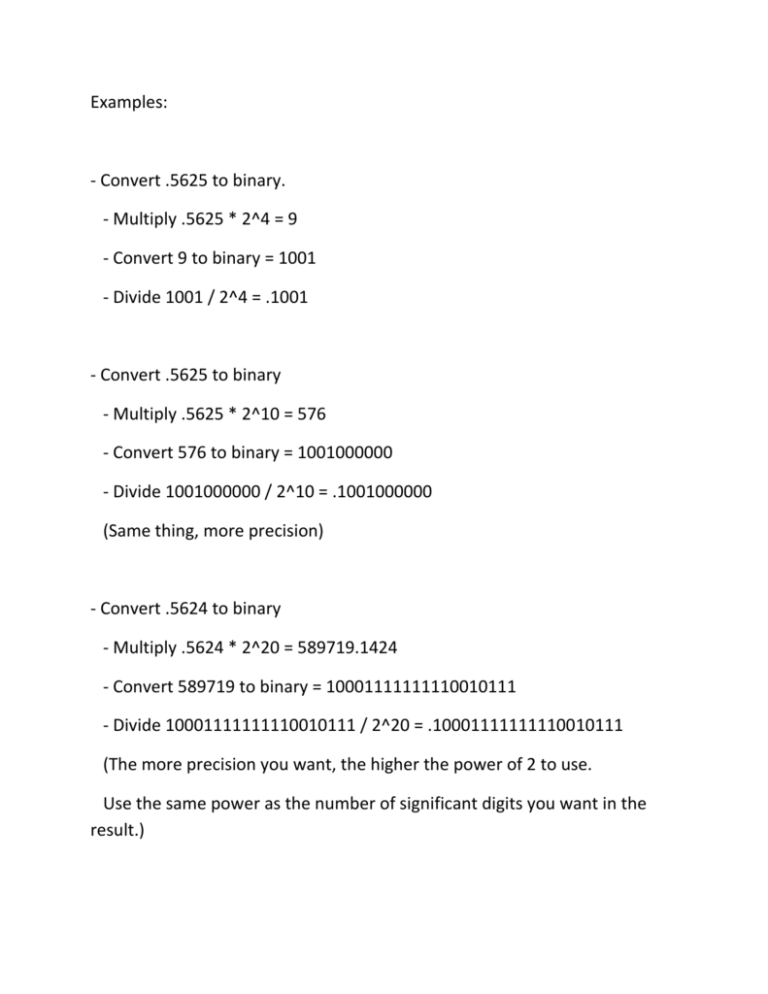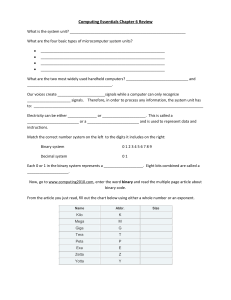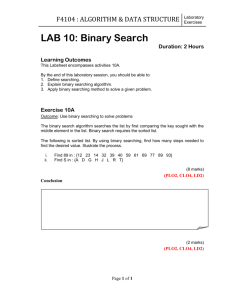convert-decimal-fraction-to-binary
advertisement

Examples: - Convert .5625 to binary. - Multiply .5625 * 2^4 = 9 - Convert 9 to binary = 1001 - Divide 1001 / 2^4 = .1001 - Convert .5625 to binary - Multiply .5625 * 2^10 = 576 - Convert 576 to binary = 1001000000 - Divide 1001000000 / 2^10 = .1001000000 (Same thing, more precision) - Convert .5624 to binary - Multiply .5624 * 2^20 = 589719.1424 - Convert 589719 to binary = 10001111111110010111 - Divide 10001111111110010111 / 2^20 = .10001111111110010111 (The more precision you want, the higher the power of 2 to use. Use the same power as the number of significant digits you want in the result.) If we have a number which has integral and fractional parts we can convert them to binary separately and then add them together or we can just multiply the entire number by a power of two, convert to binary and then divide by the same power of two. - Convert 165650.435 to binary - 165650 = 101000011100010010 - Multiply .435 by 2^20 = 456130.56 - Convert 456131 to binary: 1101111010111000010 - Divide by 2^20: .01101111010111000010 - We now add integral and fractional parts and the answer is: 101000011100010010.01101111010111000010 which we can round off to: 101000011100010010.01101111010111 Converting this back to decimal we get 165650.43499755859375 Or, done another way: - Convert 165650.435 to binary - Multiply 165650.435 by 2^20 = 173697070531 - Convert 173697070531 to binary: 10100001110001001001101111010111000011 - Divide by 2^20: 101000011100010010.01101111010111000011 which we can round off to: 101000011100010010.01101111010111 Converting this back to decimal we get 165650.43499755859375





